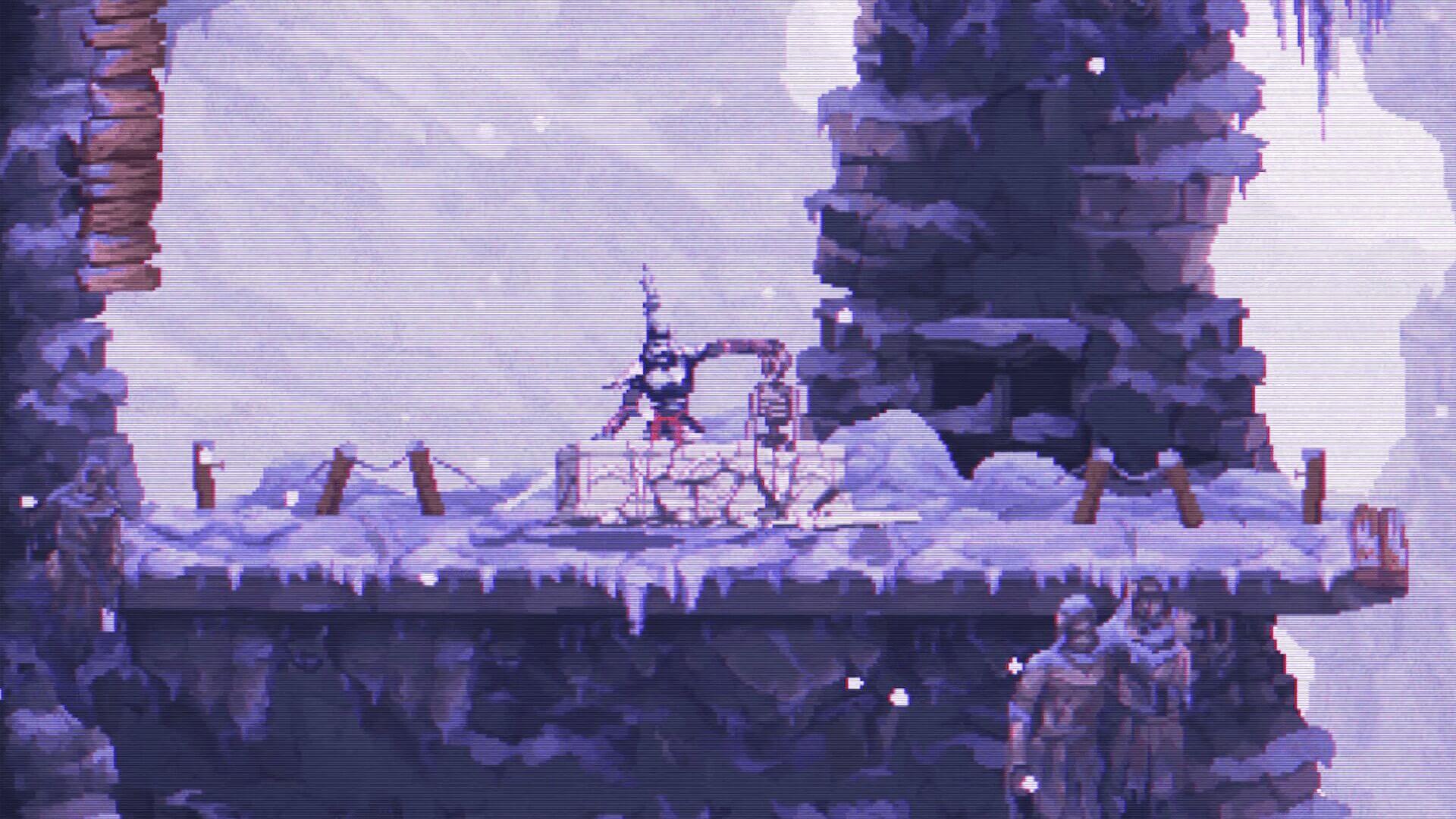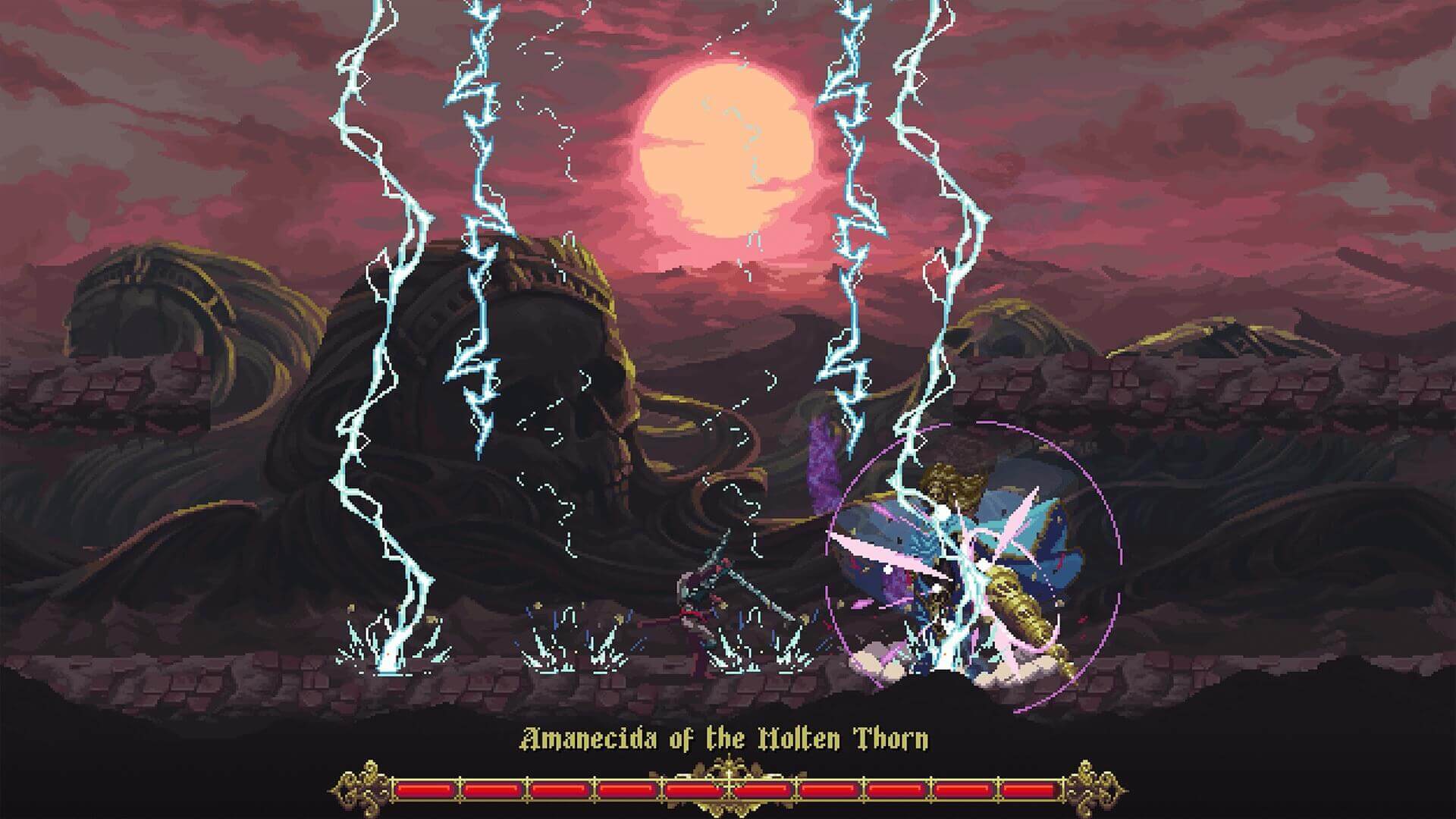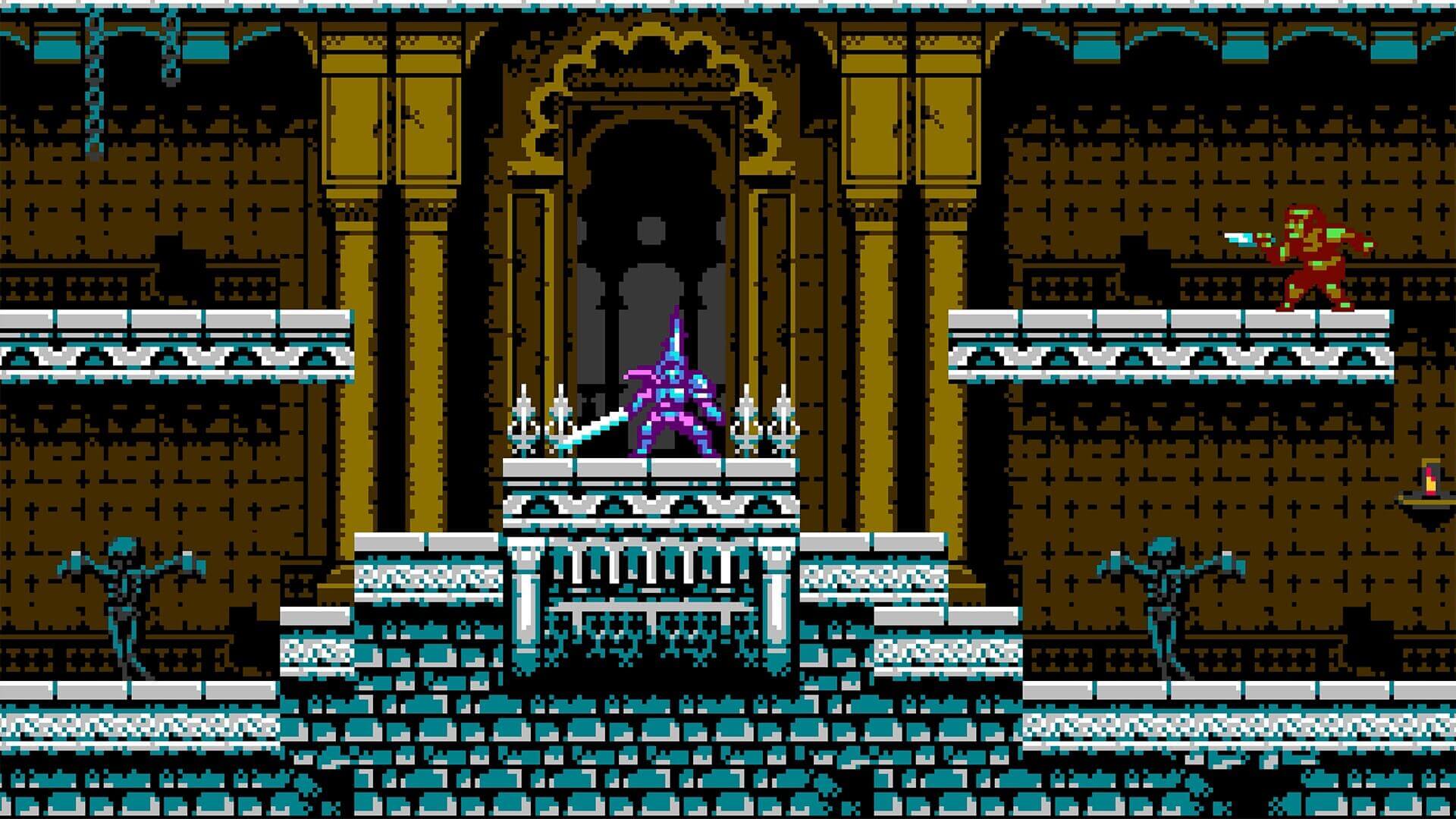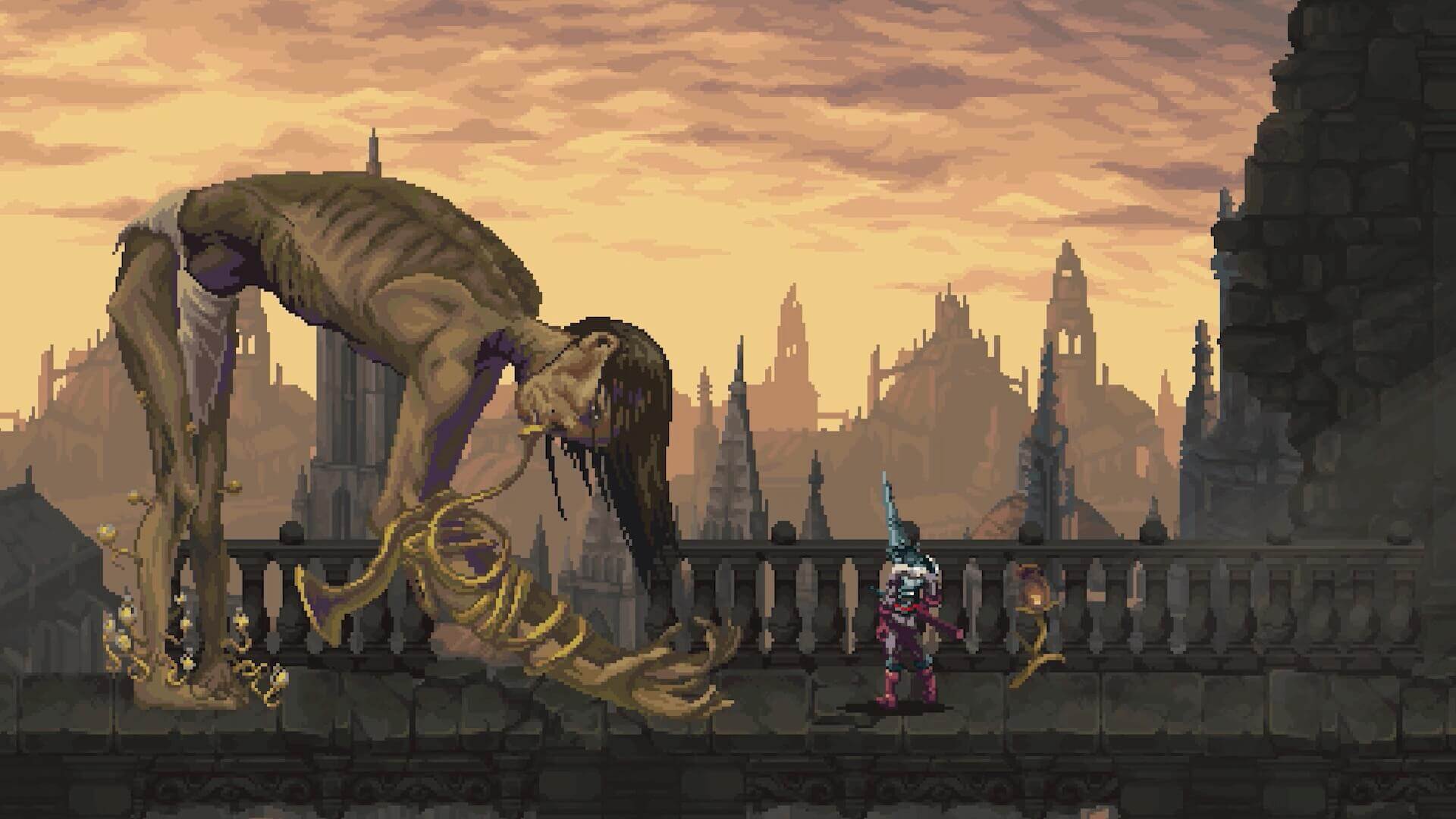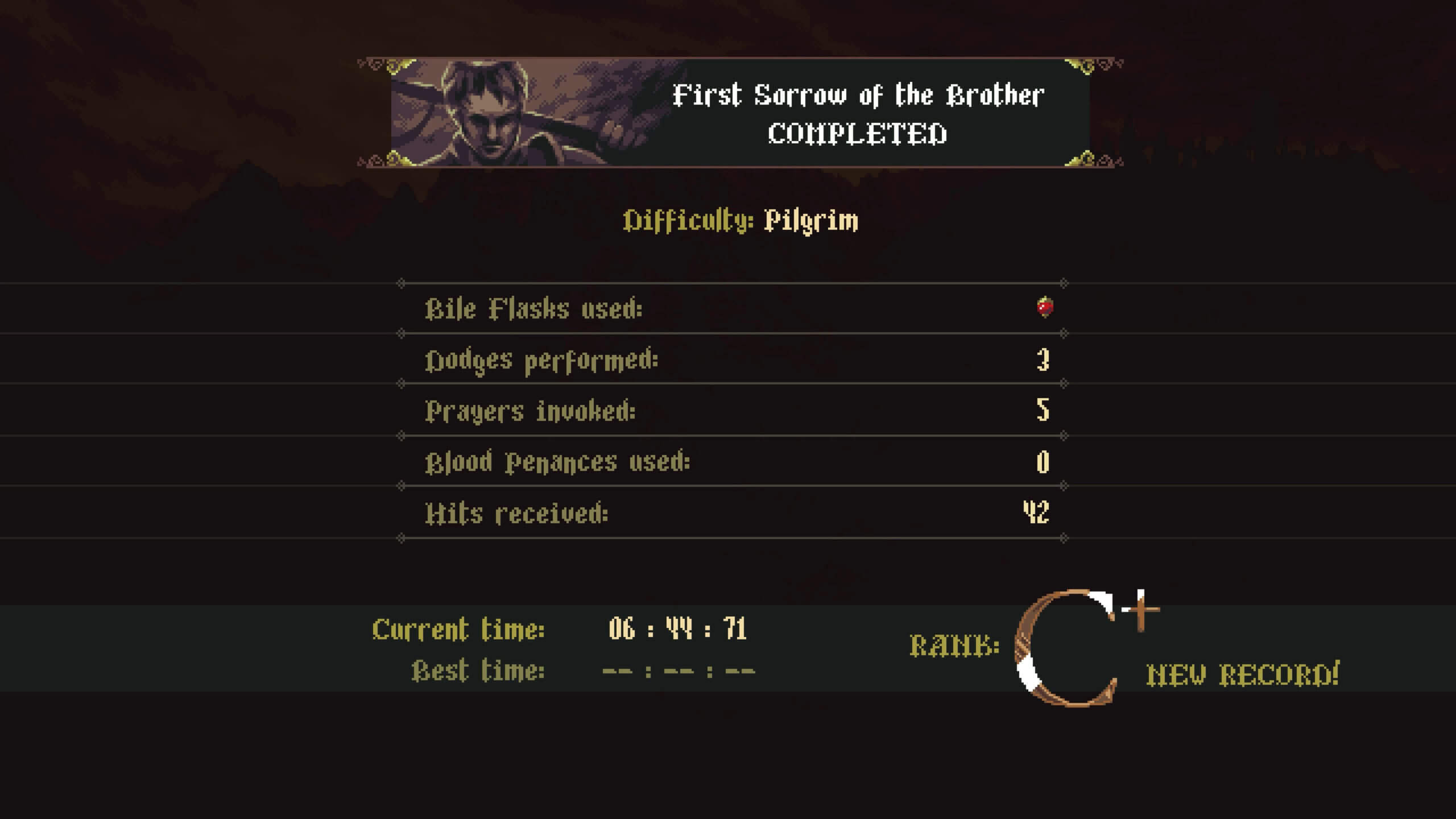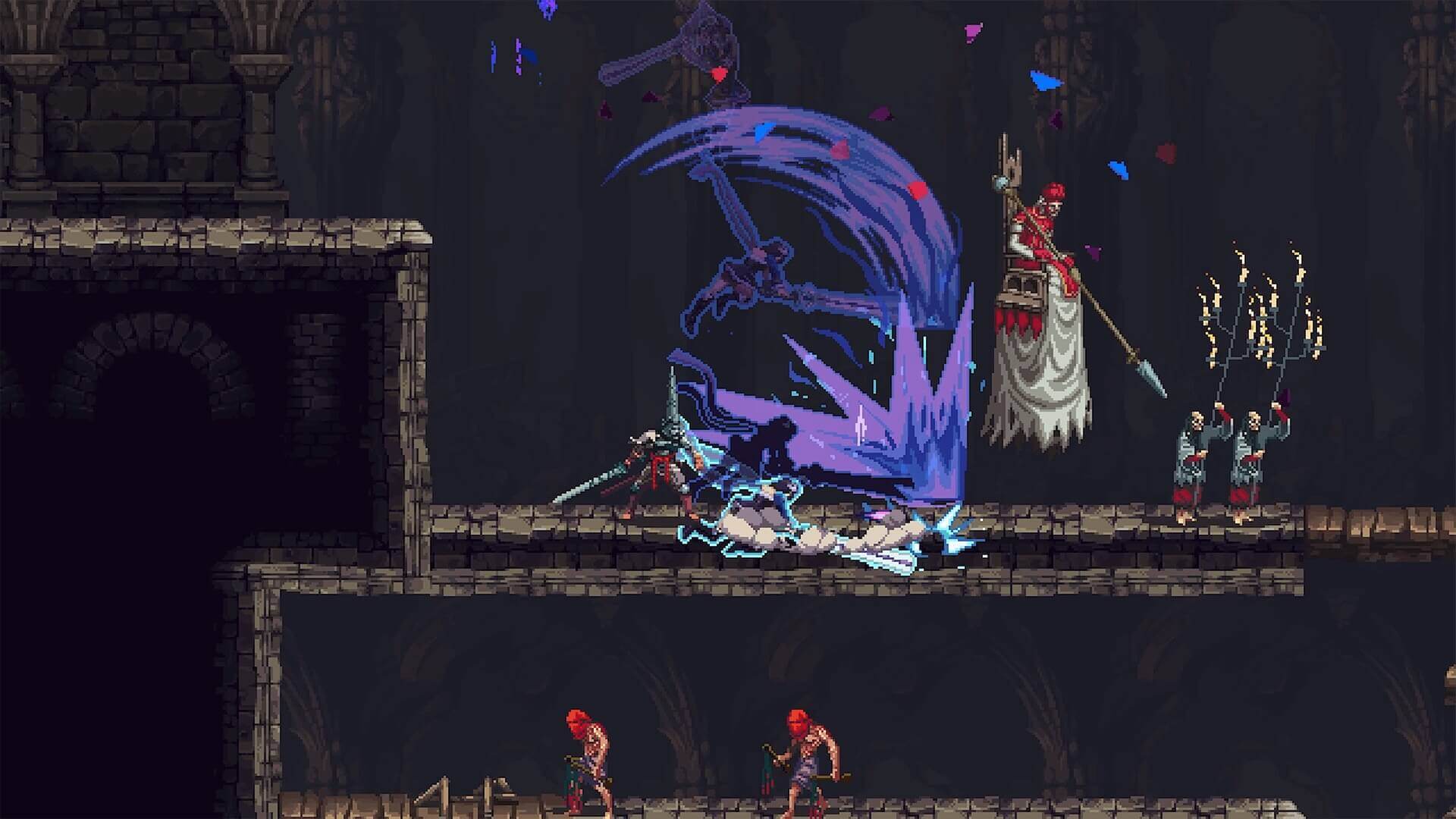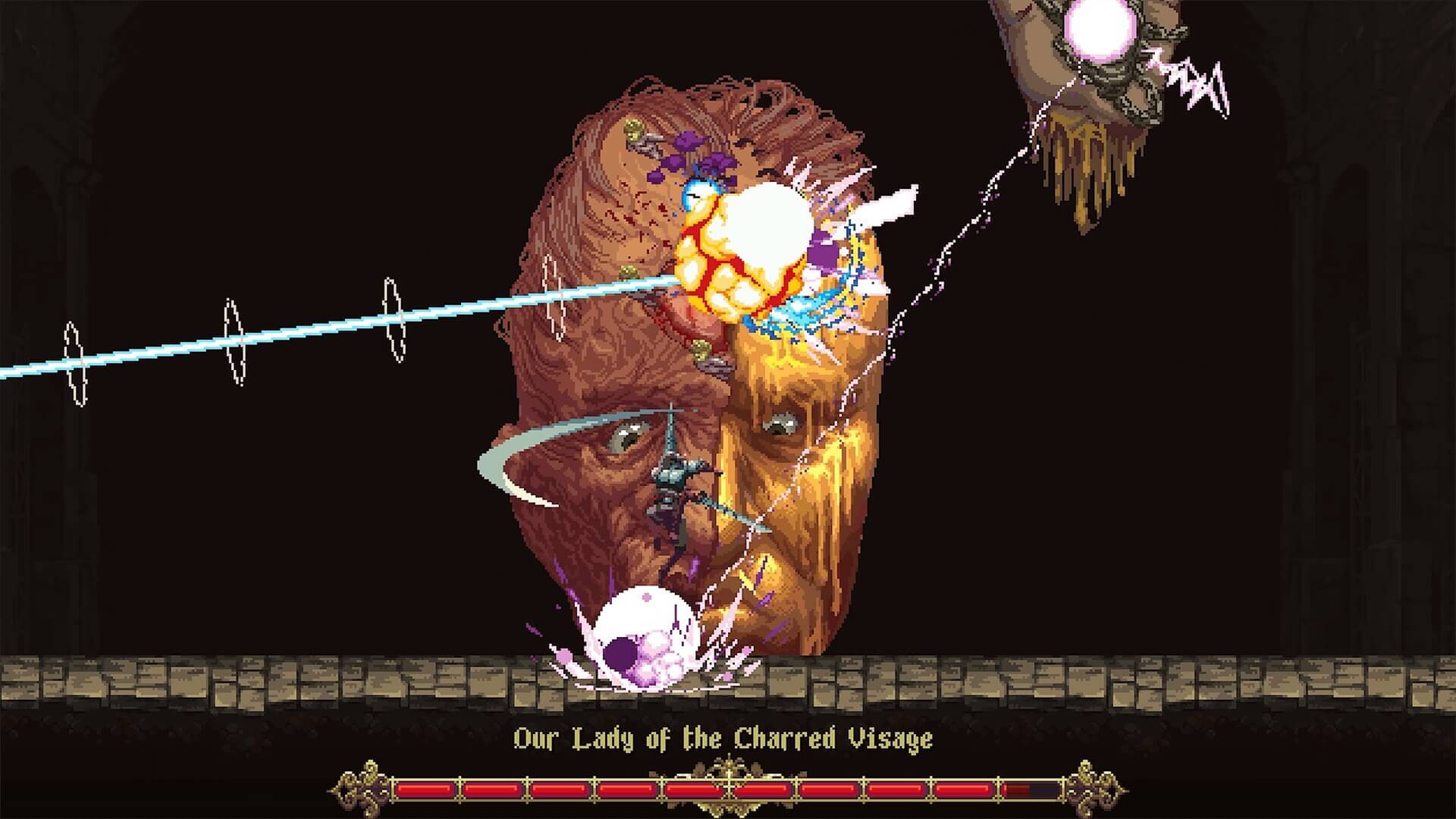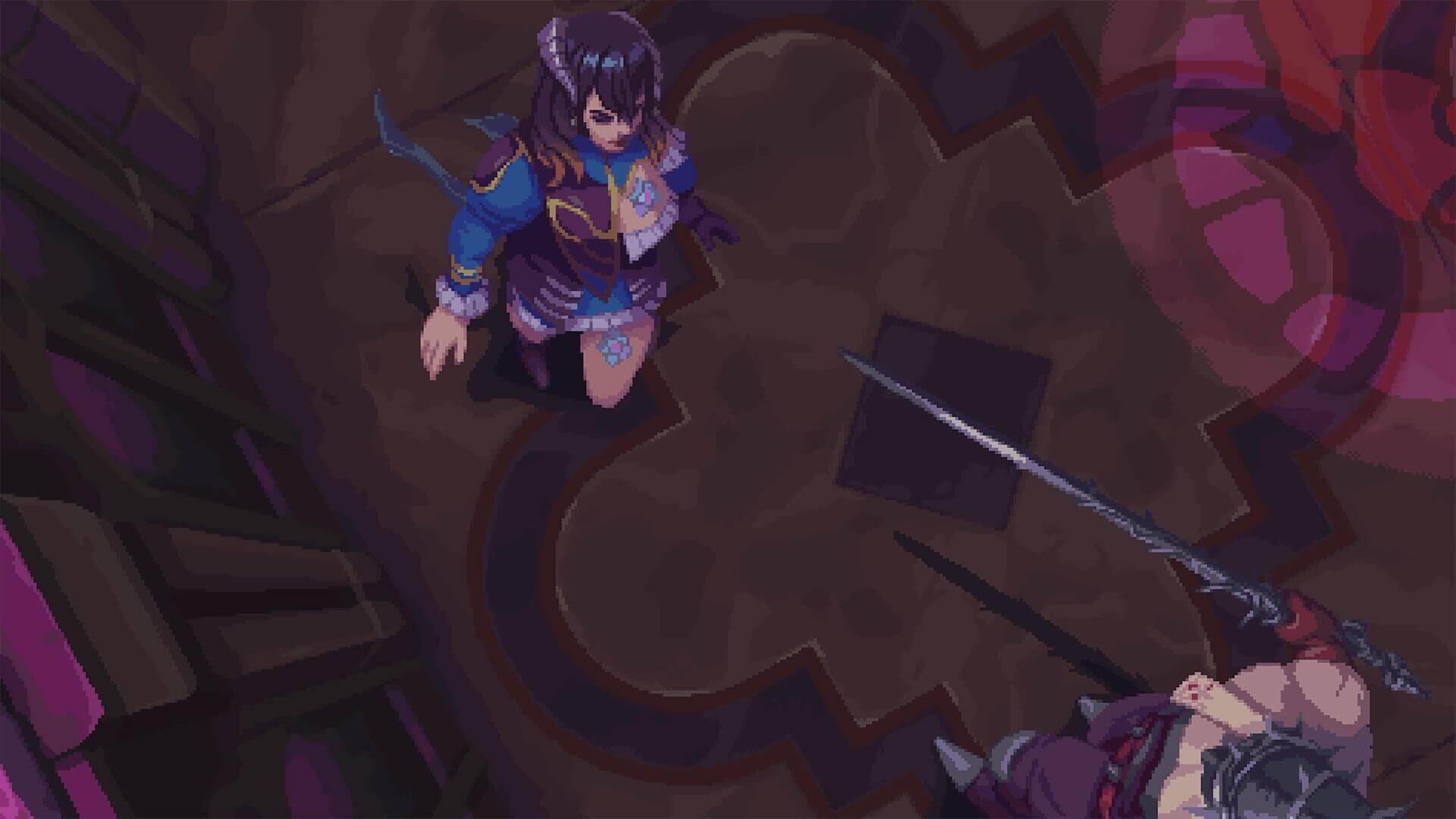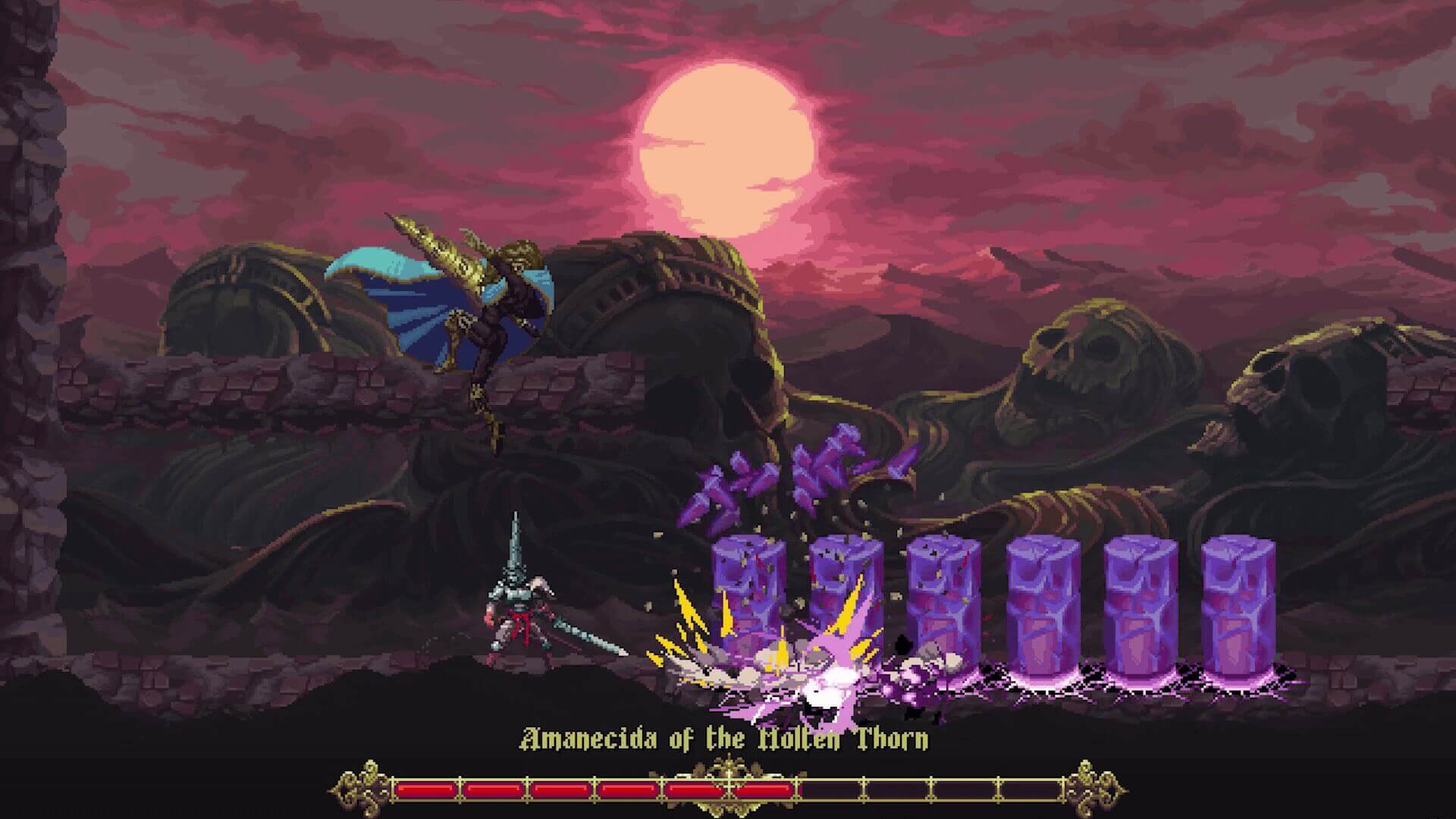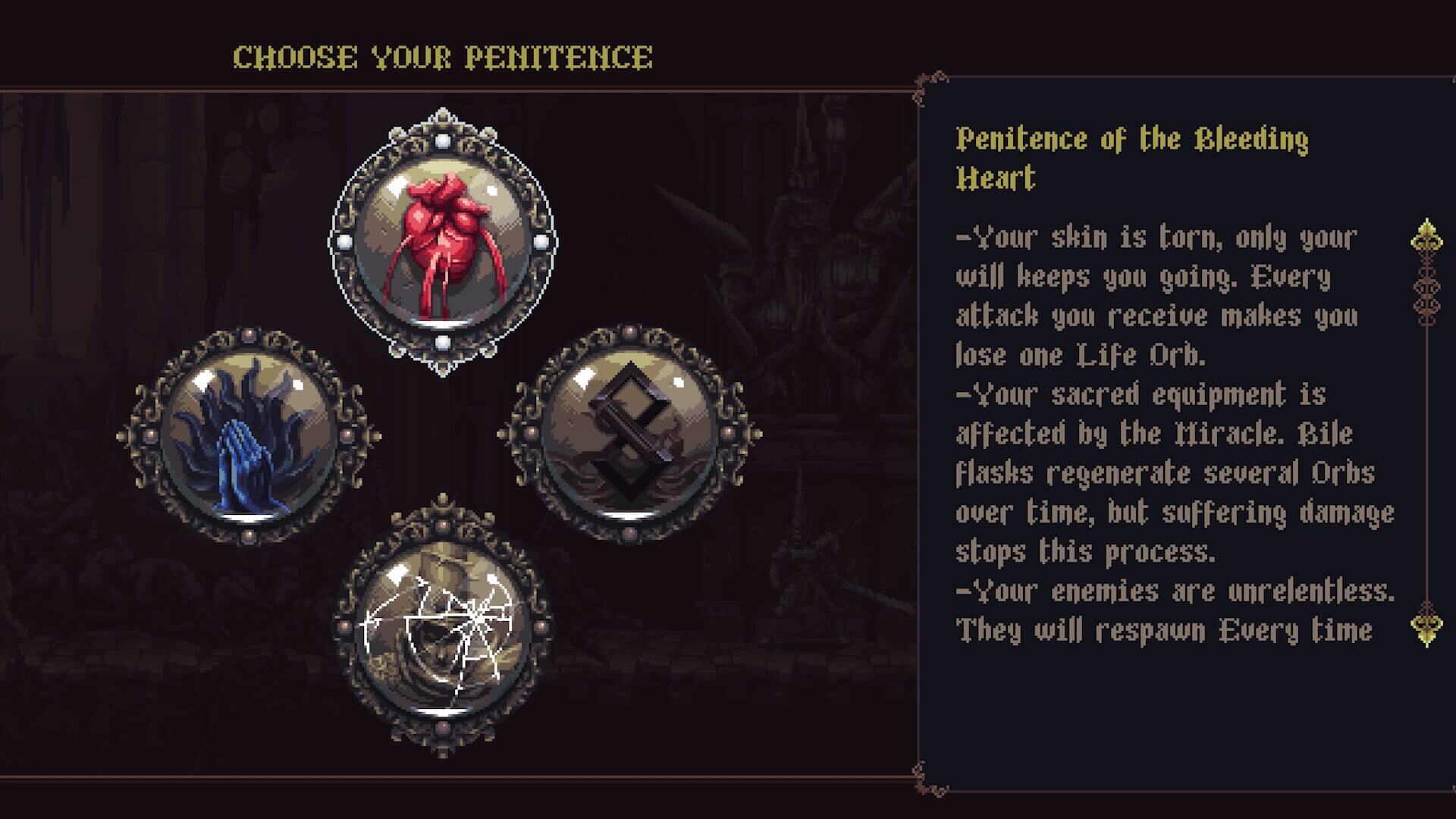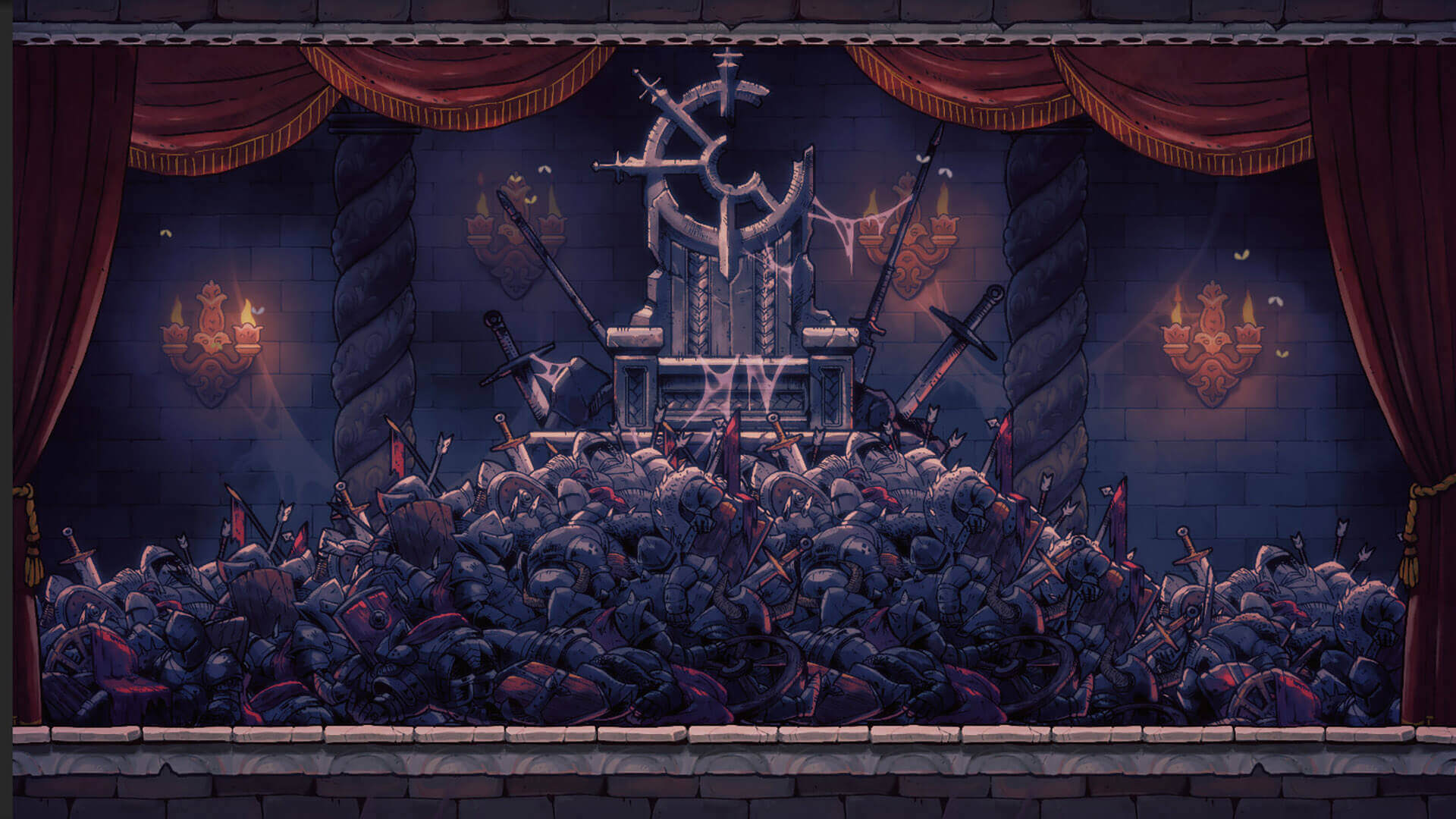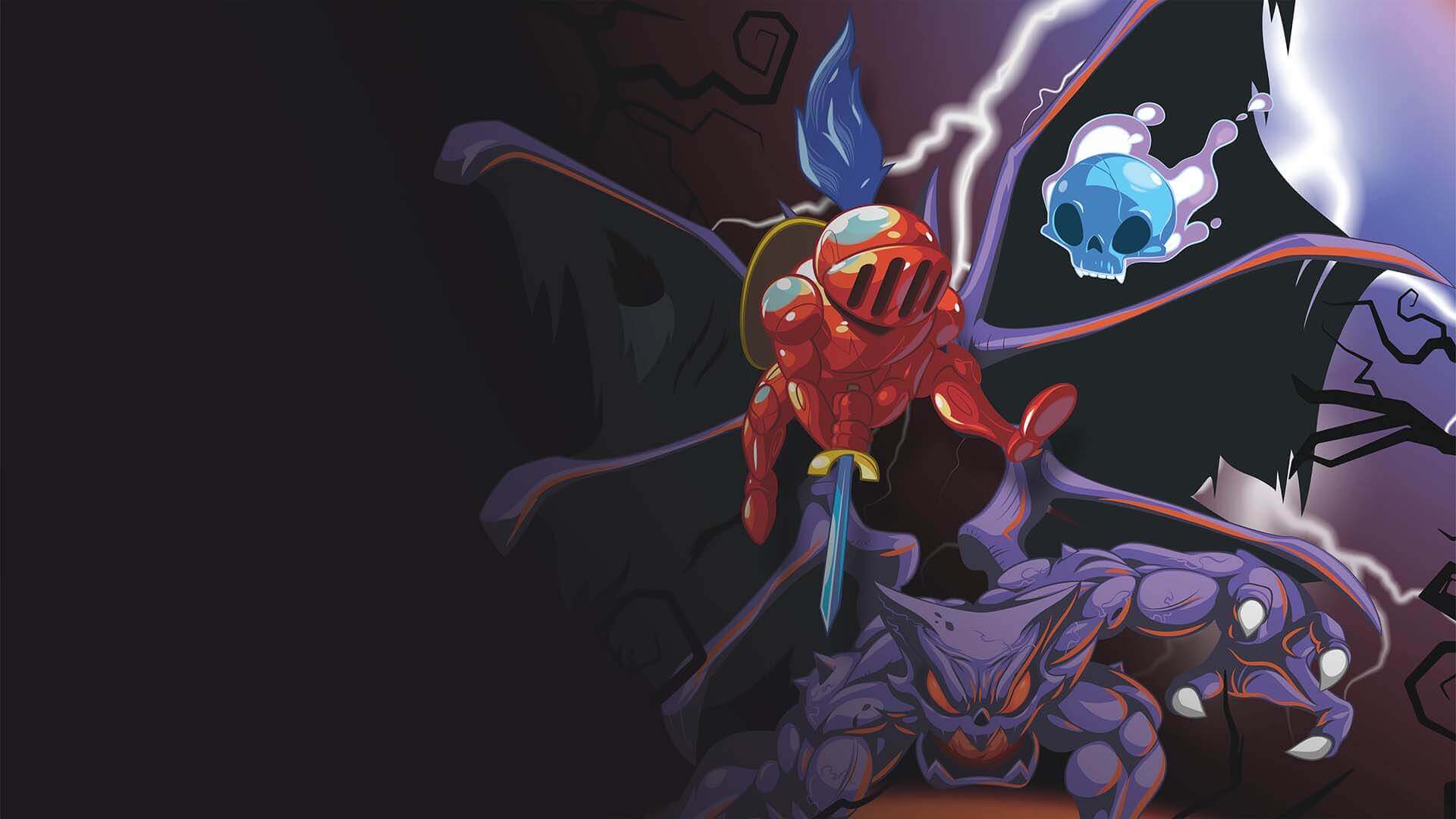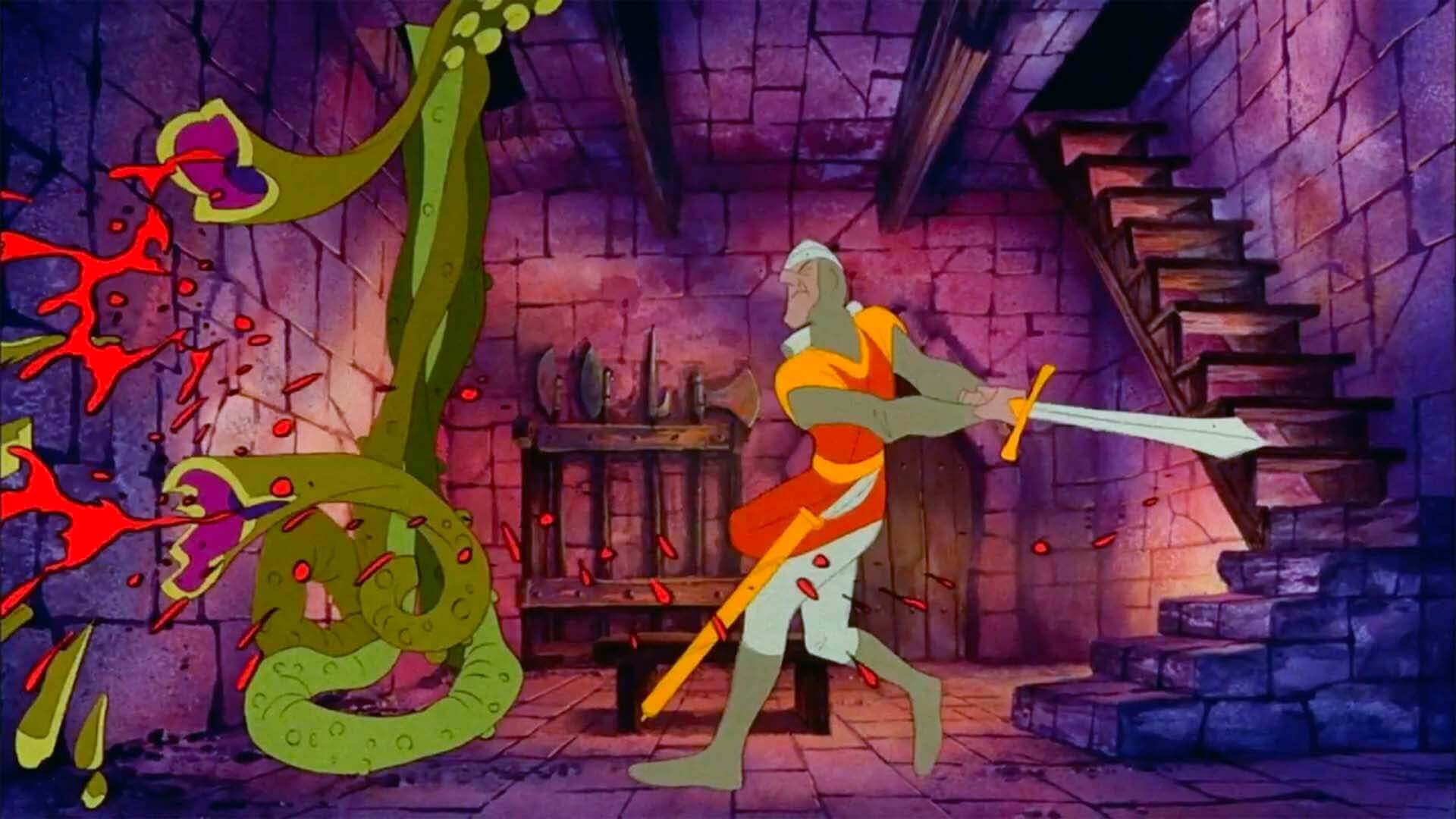January 5, 2022 — Available on PlayStation 4, Xbox One, Nintendo Switch, and PC; cult hit side-scroller Blasphemous is bound to leave an impression. Many will be drawn to the game’s aesthetic that is heavily influenced by Catholic Spain, while others may be surprised or put off by its extreme gore.
And while those elements certainly elevate the experience and make it stand out, it is ultimately the game’s engaging, interconnected world design and simple, yet satisfying combat mechanics that make it so engaging. For fans of 2D Metroidvania games, Blasphemous is an essential purchase. 2019’s Blasphemous is bound to leave an impression on someone, somehow.
“It is an impressive game with rock-solid mechanics and a world teeming with surprises and secrets to uncover.”
A Hefty Protagonist
At first glance, Blasphemous’s controls may seem unremarkable in their simplicity. Movement is handled mostly through basic jumping, dashing, and ledge climbing, and players only have a handful of combat options at any given time. These limited mechanics do not end up hurting the game at all, however, as they are bolstered heavily by the fluid, weighty animations.
Combat in particular benefits from this; every slash feels heavy and powerful, and the unlockable sword moves have committed animations that beautifully sell their impact. Parrying is similarly cathartic, as every successful block is associated with a loud clang and one of two reactions. Parrying weaker hits will automatically trigger a devastating counterattack, whereas parrying stronger attacks will cause the player character to slide backwards from the sheer force of the strike. Details like this really help give the combat a deliberate, grounded feel, which turns even the most trivial of enemy encounters into visual and auditory spectacles.
An Impressive Lineup of Foes
The combat mechanics are augmented even further by the climactic, challenging boss battles. Each one of these intimidating foes demands the player to make the most out of their dodging and parrying capabilities, but rarely to the point of being unfair.
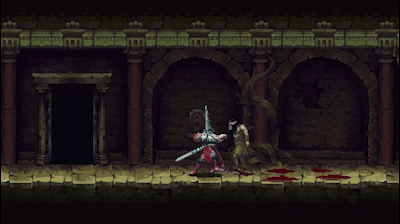
Although boss movesets can be quick and punishing, they are just slow enough that they end up perfectly suiting the game’s deliberate combat pace. Nearly every boss feels rewarding to take down, but the humanoid bosses are a particular highlight, as their greater emphasis on parrying allows them to feel like true duels between equally skilled combatants.
A World Worth Getting Lost In
The combat is consistently enjoyable throughout, but where Blasphemous truly excels is in its world design. The start of the game consists of an incredibly linear path, but after that, players will regularly run into areas of the map in which they have multiple paths to choose from. Many of these paths simply lead to single rooms containing an item or an upgrade, but several more of them lead to long stretches of gameplay or even entirely different regions of the world.
The game never explicitly tells the player where they are supposed to go, so any one of these paths could be critical for progression. It is remarkably easy to get sidetracked and end up completely divorced from your original objective, which is both empowering and overwhelming. Such design runs the risk of making the world overly confusing or cumbersome to navigate, but the game rarely suffers from this problem.
Not only are there several fast travel points that players can come across, but there are also a plethora of more organic shortcuts that lead to previously explored parts of the map. Plenty of Metroidvanias and modern games, in general, incorporate these kinds of shortcuts, but Blasphemous handles them particularly well. The game is packed with so many different environments that are all interconnected in intricate, yet sensible ways, and this makes it so that no matter where you are, you are never too far away from your next objective. It would have been easy to make navigation easier by simply placing fast travel points everywhere and calling it a day, but the game takes special care to include several shortcuts that take into account the placements of each area in relation to one another. This makes discovering shortcuts so much more gratifying than it would have been otherwise, and it makes the world feel fully realized in a way that other Metroidvania worlds simply do not.
A Few Cracks in the Armor
Not every aspect of Blasphemous is handled gracefully, however. Although platforming is mostly enjoyable, the detailed sprites sometimes make it difficult to judge how each platform or surface will behave. As is typical for platforming games, only some surfaces can be jumped onto from below and only some ledges can be grabbed, but the visual language does not always clearly indicate which is the case. For instance, in most games of this type, platforms that can be landed on from below are thinner than other platforms, yet Blasphemous includes platforms that, despite looking much thicker, behave the same way. Little oddities like this make the platforming slightly less polished than it could be.
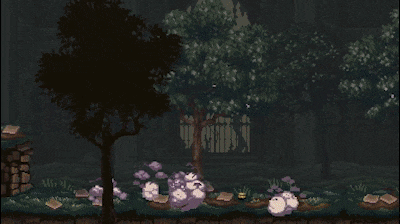
Other aspects of the game are similarly lacking in polish. Some of the hitboxes on enemy attacks seem misplaced or last way longer than their animations would suggest, which can lead to strange interactions with the parry mechanic as well as cheap, undeserved hits. Additionally, walls that can be scaled with the player character’s sword can sometimes bug out, which can prevent players from jumping away from walls or cause them to swing their swords without input. Thankfully, none of these issues occurred during intensive platforming sequences or led to death during my playthrough, but I could see them being seriously disruptive for other players.
SCORE
8
OUT OF 10
THE GOOD STUFF
- Visuals and animations are bursting with detail.
- Combat is propped up with a satisfying degree of weight and impact.
- The game world is impressive in its nonlinearity and is packed with secrets and environmental variety.
CONCERNS
- Platform functionality is not always clear.
- Enemy attack hitboxes (collision) feel unfair at times.
Conclusive Thoughts
Despite these problems, the overall experience of playing Blasphemous is an incredibly positive one, which is ironic considering its dark subject matter. The animations and overall feel of the game are handled with an immense degree of care. Altogether, it is an impressive game with rock-solid mechanics and a world that is absolutely teeming with surprises and secrets to uncover. The protagonist may be penitent, but it will be hard for players to feel the same way after finishing Blasphemous.
Published by Team 17 and created by Spanish developer The Game Kitchen, Blasphemous is available now on Steam, PlayStation, Xbox, and Nintendo Switch.


